Giveaway Time! Leave a comment after my article to be in the running to win one of two paperback copies of ‘In Bed with the Tudors’ by Amy Licence. Conditions of Entry below. Good luck!
Competition now closed!
The Mystery of Queen Anne Boleyn’s Second Pregnancy
By Natalie Grueninger
In most recent biographies, Anne Boleyn’s second pregnancy, at the most, occupies a couple of paragraphs. Eric Ives and David Loades conclude that it ended in a miscarriage, Alison Weir in The Six Wives of Henry VIII states that ‘it was either stillborn, or died very soon after birth’ (pg. 271), Antonia Fraser suggests that ‘the most likely end was a stillbirth: probably a month or so early’ (pg. 218), David Starkey sums it all up by stating that it ‘ended in miscarriage or still birth’ (pg. 553) and Paul Friedmann, writing in the late nineteenth century, concluded that ‘Anne had been mistaken about her condition’ (pg. 151) and had never been pregnant. Only in The Rise and Fall of Anne Boleyn, does the author, historian Retha Warnicke, go into some detail in her attempt to unravel the tapestry of secrecy shrouding the events of the summer of 1534.
While researching my debut book, In the Footsteps of Anne Boleyn, my co-author, Sarah Morris, and I examined what contemporary evidence exists and pieced together a tragic story.
Christmas 1533 at Greenwich was a jovial and lively affair. John Husee informed Lord Lisle that, ‘The King has kept a great court and is as merry and lusty as ever I see.’ On New Year’s Day there was the customary exchange of gifts, Queen Anne presented the king with:
A goodly gilt bason, having a rail or board of gold in the midst of the brim, garnished with rubies and pearls, wherein standeth a fountain, also having a rail of gold about it garnished with diamonds; out thereof issueth water, at the teats of three naked women standing at the foot of the same fountain.
Retha Warnicke believes that Anne’s gift ‘must be characterised as a fertility symbol.’ (pg.173) If Anne was in fact already hinting at her condition then we can assume that she became pregnant sometime around November 1533.
On 5 January, in the instructions to Nicholas Heath and Christopher Mont, who were being sent on embassy to the German princes, Henry praised his wife:
‘whose approved and excellent virtues, that is to say, the purity of her life, her constant virginity, her maidenly and womanly pudicity, her soberness, her chasteness, her meekness, her wisdom, her descent of right noble and high parentage, her education in all good and laudable thewes and manners, her aptness to procreation of children, with other infinite good qualities, more to be regarded and esteemed than the only progeny, be of such approved excellency as cannot be but most acceptable unto Almighty God, and deserve His high grace and favour, to the singular weal and benefit of the King’s realm and subjects.’
It seems that Henry was already aware that his wife was again pregnant, inspiring the reference to her ‘aptness’ to procreate children.
By 23 January 1534, imperial sources had been informed that Queen Anne was ‘again in the family way’ allegedly by a letter from the newly arrived English ambassador in France. Eric Ives postulates that if the ambassador was Lord William Howard, ‘the date of arrival must have been the beginning of December, suggesting that Anne became pregnant in November 1533.’ (Pg. 394) By 28 January, Eustace Chapuys was aware of Anne’s condition and on 29 January, it was observed that, ‘The King and Queen are merry.’
In February, Henry VIII met with Chapuys and confirmed the rumours of Anne’s pregnancy by saying that he believed he’d shortly have a son.
On 27 April, Anne’s receiver-general, George Taylor, wrote to Lady Lisle of the king and queen’s good health and of Anne’s ‘goodly belly’.
By April 1534, the pregnancy was common knowledge. The king, confident and beaming, expected a prince and ordered from his goldsmith, Cornelius Hayes, an elaborate silver cradle:
A silver cradle, price 16l. For making a silver plate, altering the images, making the roses underneath the cradle, the roses about the pillars, and new burnishing, 13s. 4d. For the stones that were set in gold in the cradle, 15s.; for fringes, the gold about the cushions, tassels, white satin, cloth of gold, lining, sypars and swadylbands, 13s. 6d. Total, 18l. 1s. 10d. The silver that went to the dressing of the Adam and Eve, the making of all the apples, the gilding of the foot and setting of the currall, 33s. 4d.
At around the same time, a portrait medal was struck to commemorate the anticipated birth of a son, it was inscribed with Queen Anne’s motto, The Moost Happi, Anno 1534 and A. R for Anna Regina. Since the baby did not survive, multiple copies were not commissioned, however, the prototype survives and is today stored in the British Museum.
In early June, Henry was in the midst of planning a trip to Calais to meet with Francis I. It was scheduled to take place on 20 August or soon after, presumably after Anne’s lying-in, again corroborating the argument that the queen had become pregnant sometime around November 1533.
On 26 June Sir Edward Ryngeley reports that the ‘King and Queen are merry’ at Hampton Court Palace. However, quite suddenly, on 2 July Henry leaves Anne behind and moves to The More, where he summoned Thomas Cromwell and Anne’s uncle, the Duke of Norfolk, to meet him on 5 July. At around this time the decision was made to send the queen’s brother, George Boleyn, ‘with all speed’ on a special embassy to France, in order to delay the planned meeting between Henry and Francis on account of the queen’s advanced pregnancy and her desire to have her husband, the king, by her side at this time.
Lord Rochford’s instructions were as follows:
1.Rochford is to repair to the French king with all speed, and in passing by Paris to make the King’s and Queen’s hearty recommendations to the queen of Navarre, if she be there, and say that the Queen his mistress much rejoices in the deeply-rooted amity of the two kings, but wishes her to get the interview deferred, as the time would be very inconvenient to her, and the King is so anxious to see his good brother that he will not put it off on her account. Her reasons are, that being so far gone with child, she could not cross the sea with the King, and she would be deprived of his Highness’s presence when it was most necessary, unless the interview can be deferred till April next. Rochford is to press this matter very earnestly, and say that the King having at this time appointed another personage to go to his good brother, the Queen, with much suit, got leave for Rochford to go in his place, principally on this account.
2. That there was nothing she regretted at the last interview so much as not having an interview with the said queen of Navarre ; and she hopes she may be able to come to Calais with her brother in April next, if the interview be deferred till then.
It seems very likely that the proposed meeting was cancelled because sometime between 26 June and 2 July, disaster struck – Anne was delivered of a stillborn baby, after which the king, no doubt crushed by his wife’s failure to provide him with a living heir, left her behind at Hampton Court and commenced his already delayed summer progress.
In our book, Sarah Morris and I suggest that:
‘No longer able to face Francis, who was already the father of three healthy sons, a cover story was created to save face and the whole event swept under the carpet.’ (Pg. 167)
On 18 July we hear from John Husee that ‘The King is now at Oking [Woking Palace Surrey], and comes hither on Tuesday, and will tarry here and at Eltham till Friday, when he will meet with the Queen at Guildford. Southwark, 18 July.’
The king was planning to visit the Princess Elizabeth at Eltham Palace before joining the queen at Guildford, where they were reunited sometime toward the end of July or the beginning of August. The king and queen had been apart for more than a month, their longest period of separation since 1528, when Anne had retired from court in anticipation of the arrival of Cardinal Campeggio.
It is not until the end of September 1534, that Chapuys reports that ‘the lady’ (Anne Boleyn) was not going to have a baby after all. At the same time we hear through Chapuys that rumour had it, Henry doubted whether the queen had ever been pregnant, an idea explored by J. Dewhurst in Medical History.
Dewhurst suggested that Anne might have suffered from a case of pseudocyesis or false pregnancy, a rare condition where a woman believes that she is carrying a baby and shows pregnancy-like symptoms when she is not pregnant. The condition is yet to be fully explained, however, psychologists believe that most women who experience false pregnancy are often experiencing stress and anxiety, along with an extremely strong desire to be pregnant.
Having only just given birth to a healthy daughter in September 1533, I don’t believe this to be a reasonable argument. There is absolutely no evidence to suggest that Anne was under any stress around the time of her alleged second pregnancy. On the contrary, the reports we have paint the picture of a healthy and happy couple.
In the notes section of his biography of Anne Boleyn, Eric Ives states:
“That it was a miscarriage and not a stillbirth or neonatal death is indicated by the queen not having ‘taken her chamber’” (pg. 394)
That there is no record of the queen having ‘taken her chamber’ is indisputable, however, does this prove that Anne did not suffer a stillbirth? Not necessarily.
Ives himself stated that it’s likely Anne was pregnant by November 1533, in which case by the beginning of July, when it’s generally accepted that she lost the baby, she would have been around 8 months pregnant.
In modern terms, a miscarriage is generally defined as the loss of a baby before 20-24 weeks; the death of a fetus at 8 months gestation is referred to as a stillbirth. In this case the mother still needs to go through labour and delivery in the same manner as mothers delivering a live baby.
In light of the evidence, it seems likely that Anne went into labour prematurely sometime between 26 June and 2 July, explaining why no records survive of the queen’s confinement. This leaves open the possibility that the loss was so devastating, so damaging, especially considering that Henry was still trying to prove to the world the righteousness of his marriage, that all present were sworn to secrecy and the whole incident erased from history.
Unless one has experienced such heartbreak, it’s difficult to imagine the overwhelming emotional and physical pain that Anne must have felt. The baby would have been well formed and the sex determinable, although, the details were not recorded. The king left Hampton Court in all haste and abandoned his grieving wife. Was the loss of an heir the reason for their extended and uncharacteristic separation? The silence of the royal nursery and the empty silver cradle, perhaps, too much for even a hardened king —and one well-versed in loss— to bear.
This event must have brought memories of Katherine of Aragon’s tragic obstetric history flooding back and sowed a seed of doubt in the king’s mind that would eventually grow to consume him. Anne had promised Henry sons and heirs but had only delivered a daughter and a stillborn baby. In the king’s eyes, she’d failed him; with Henry’s insecurities awakened, there would be no room for further disappointments.
References & Sources Calendar of State Papers, Spain, Volume 5 Part 1 – 1534-1535 Letters and Papers, Foreign and Domestic, Henry VIII, Volume 6 – 1533. Letters and Papers, Foreign and Domestic, Henry VIII, Volume 7 – 1534. Fraser, A. The Six Wives of Henry VIII, 1992. Friedmann, P. Anne Boleyn, trans. J. Wilkinson, 2013. Grueninger, N. & Morris, S. In the Footsteps of Anne Boleyn, 2013. Ives, E. The Life and Death of Anne Boleyn, 2004. Loades, D. The Six Wives of Henry VIII, 2010. Starkey, D. Six Wives, 2003. Warnicke, R. The Rise and Fall of Anne Boleyn, 1989. Weir, A. The Six Wives of Henry VIII, 2007. The Mystery of Queen Anne Boleyn’s Second Pregnancy Good luck! Conditions of Entry For your chance to win a paperback copy of In Bed with the Tudors you must be subscribed to On the Tudor Trail’s newsletter (if you are not already, sign up on our homepage). Then simply leave a comment after my post between now and January 22, 2014.Don’t forget to leave your name and a contact email.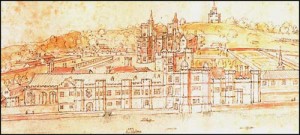

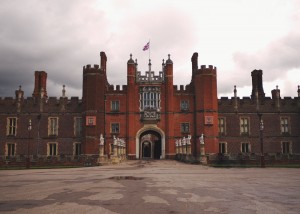

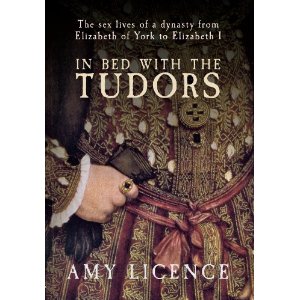


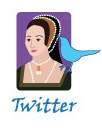




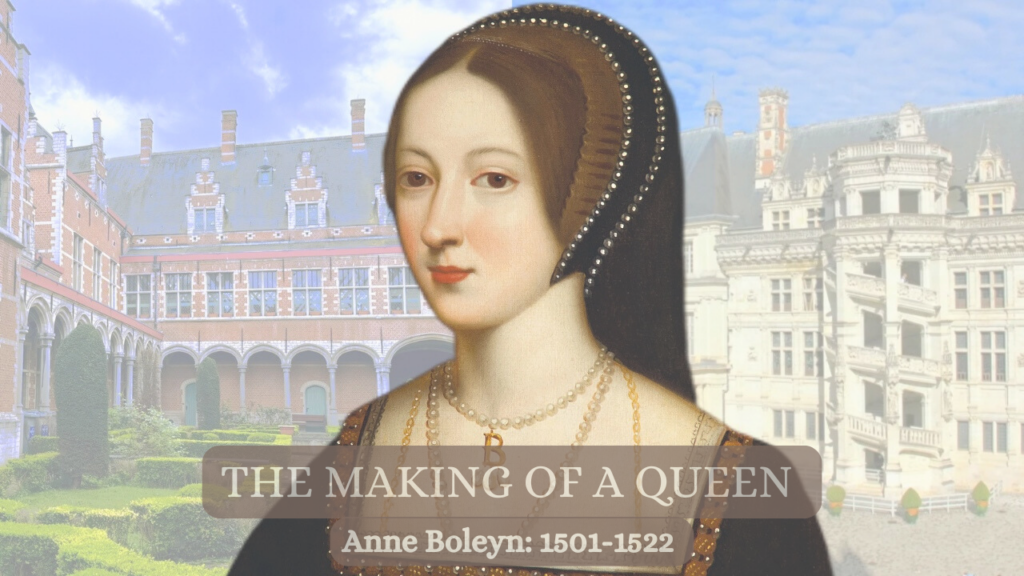
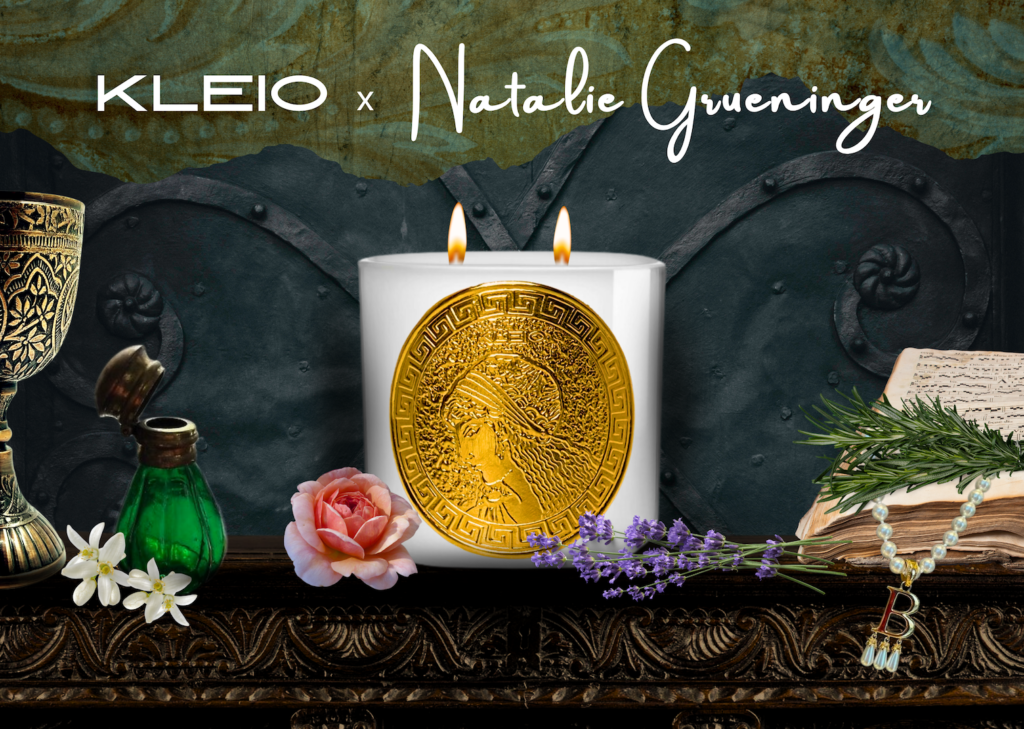













I’ve always been intrigued with Anne’s second pregnancy for some reason. I’d love to read your book and see what your ideas are on the subject! (For some reason, the link on your homepage to sign up for your newsletter is NOT working. Will try again later.)
Anne is a fascinating character ; the secrecy surrounding this birth adds to her mystique .
Very interesting. I’ve always felt bad for her. If only she had the child.
That was quite interesting
An excellent written piece on AB and the second pregnancy. The “what if’s” that come to mind had this child survived , would probably make a good essay too. Would AB have secured her position on the throne,? Excellent thoughtful article.
I feel so sad for anyone that loses a child at any stage during pregnancy but for Anne and the pressure that she must of felt to ‘perform’ was huge. Is it any wonder that she suffered miscarriages with that kind of stress?
That was surprisingly interesting. I love reading anything about the Tudors, but its usually fiction. Im am enjoying all off this fact based reading and it is painting such a different picture! Thank you for your site and all that you share!
So Henry praises Anne in January when finding her with child and the deserts her in July when she loses it. Nice man! It just makes me so angry!! Well, I would love to win aq copy of Miss Amy’s book as I know she is a brilliant writerhaving read Royal Babies and numerous blogs. Thank you, Jacqueline Baird msdotgeneralleeatgmaildotcom
I love reading your articles, it’s so interesting! There are not many German books about the Tudors and so I’d love to read your book to get more information (I hope it would be possible to send it to Germany…) When I read your posts I often have the pictures of The Tudor TV series in my head 😉
I believe she gave birth to a stillborn boy.
Hello,
Great article, I always find myself reading anything I can get my hands on when it comes to the Tudors. The intrigue and the passion that if you take the time to read about can teach us so much about history and the lives and loves of all the individuals.
Love Tudor history
Would love your book
Thank you for another small glimpse into the life of Queen Anne Boleyn.
A pity there’s no photo of the Xmas gift fountain! Or is there?
I. would love a copy of your book. I cant get enough of this era in time.. and Queen Anne in particular!!
Fascinating stuff, I can only begin to imagine the pain poor Anne was suffering. Poor Anne and poor baby 🙁
I can’t imagine how soul destroying it must have been for Anne – to be so open to public scrutiny, to feel a failure for not producing a healthy child (something completely out of her control) and then for your new husband to just abandon you when you need him. It must have broken her heart. It’s strange how much Catherine and Anne had in common at the end…
I enjoyed this article. 🙂 I want to read your book as well! Thanks!
Fascinating article Natalie. The pregnancy of 1534 is a real mystery. I too believe that it probably ended in a stillbirth in July 1534.
I love the plantagenant and tudor era and have quite a collection of litrature and would be over the moon to get my hands on a copy of this to add to my collection,Anne is always portrayed as a cunning woman and all her hopes on providing a son and heir must have come crashing down on her when she lost her baby
The subject of Annes pregnancys have always fascinated me as she got pregnant so quickly with Elizabeth but failed to have another live child, but did get pregnant. This article has given me mpre detail about her mysterious second pregnancy so thankyou for that. As always it was detailed, informative and helpful.
Very fascinating, would enjoy reading more. Love the blog, always learning new things and looking forward to the next interesting post.
this is very interesting to read. I would llove to read your book and Thankyou 🙂
Whether a stillborn or miscarriage, it must have been heartbreaking for both.
Poor Anne! That must have been so awful after just giving birth successfully to Elizabeth. Although the amount of strain and stress felt my her to produce an heir, especially given the nature of her rise, mean it is not terribly surprising she suffered miscarriages/still births. I wonder how different depictions of Anne Boleyn would be had she given birth to a strong, healthy boy. Would have perhaps overshadowed Elizabeth.
My dear neighbor, who works at the library, knew which books would get me hooked on the Tudors.
I am enjoying the discovery of who Anne Boleyn was. This is a new chapter in my life and I appreciate it.
One of my favourite periods in history. Full of intrigue, pagentry and many many secrets. Would like to read more in “In Bed with the Tudors” please add me to your Newsletter list as link appears not to work.
With thanks M Short
shortm24@gmail.com
Your article is really interesting, it’s a shame more about her second pregnancy isn’t documented, however, as you suggests, the silence may speak for itself. You cannot help but feel for Anne who probably lost a baby at more or less full term, especially knowing the events that to we’re ensue shortly afterwards.
Can not wait to read your latest book. Must say it sounds intriguing. Have a good day.
This is really interesting . I didn’t really know that Anne had been pregnant a second time . Thanks for this
I have always read about Ann’s second pregnancy I but never had the opportunity to see do many dots joined to make the reasoning of whether it had been stillborn, a miscarriage or false pregnancy…. Your find certainly make a it intriguing, cutting across conclusions and other assumptions fiction has tried to put in place… I want to find out more…. And find so few resources where I am to do so…. This was a great read just as your other posts always are.
So insightful! I must commend you on your dedication to this research and I enjoyed this very much. In my opinion your aim at this subject raises even more interest in my mind!
Thank you so much! Such an interesting article!! I follow on Facebook and love it!! Thanks again for all your work 😉
I so wish that my father were still alive because he and I would have loved to read this book and discuss it for hours afterward! I can’t wait to purchase it and share it with my young son, who has inherited our love of history–especially all things Tudor. -Kim (and Max) Johnson, Thistle62@aol.com
I am just starting to read about this period of history. I look forward to reading your books!
Thank you for this interesting article, I’ve really enjoyed reading it. Please do count me in for the competition! 🙂
Another great article! I always feel for the women who gave birth before modern times. For Anne, it must have been a double stress, just having a child to begin with, but also needing it to be a healthy boy.
Your theory makes the most sense of any I’ve ever read on the subject. After having given birth to a healthy daughter in her first pregnancy, there would be little reason for Anne to experience pseudocyesis. And if she fell pregnant in November 1533, this would have been a stillbirth. The mystery surrounding the entire event can only be attributed to Henry’s fragile ego. Thanks for this enlightening, thoughtful post.
Terrific article! What do you think of the possibility that Anne was Rh negative (with Henry being Rh positive)? That would explain a successful first pregnancy, but subsequent pregnancies would end in miscarriage. So many interesting theories…
Perhaps overwhelming stress and anxity was partly to blame for this tragic event in Annes life. The pressure must have been immense.
Thank you for sharing this insight Natalie, very thought provoking. Debs x
I have been reading David Starkey’s book on the wives and have been enraptured by Anne. The pure devastation and heartbreak would’ve been bryond measure not to mention the expectations of providing an heir to validate the marriage. I’m so addicted to Anne’s story I starve for information. I am addicted to this website and wouldlove to have more.
Fascinating article! Hard to imagine her grief, and her fears.
Nellista @ yahoo dot com dot au
I’ve always wondered if the second pregnancy was the prince Henry so desperately wanted and it being stillborn just destroyed him mentally. I also wonder, morbidly perhaps, if there is a grave somewhere for this baby that has yet to be discovered and would answer those questions! I absorb everything I can find on the Tudor Dynasty, after all, who needs a soap opera when you have them to study?!
Wow ! How interesting!
Fascinating!
This article kept me alert and intrigued while feedig my newborn at 3am! It’s actually do heartening to see how the attitude per lost pregnancies and stillborns has only recently changed. Up until a few decades ago, stillborns were not talked about and miscarriages were swept under the rug.
It’s easy to sometimes forget that historical figures were real people and that human emotion and experience 500 years ago was much like human emotion and experience today. That said, when we view it in that light, it’s very easy to understand why this pregnancy and it’s outcome were hushed up. The usual grief, disappointment and the added political considerations easily explain how and why this could happen. Also, we don’t know a lot about all the circumstances surrounding Katherine of Aragon’s pregnancy losses. Still birth and neonatal death were so common at that time that it really wasn’t remarkable in the same way it is today. It was, sadly, a fact of life that people just tried to brush off and move on afterwards.
Very interesting read! From what I’ve read, I’ve always felt that Henry wouldn’t have acted as he did if Anne had a false pregnancy or early miscarriage. I’m interested to read the book and see another viewpoint!
I find all history fascinating, but there is something extra magical about the tudors, absolutely love your facebook page
If George Taylor commented on the Queens belly, then I don’t understand why some would say she had a false pregnancy? Seems like it would be a difficult symptom to fake. Isn’t there a rumored 3rd pregnancy as well?